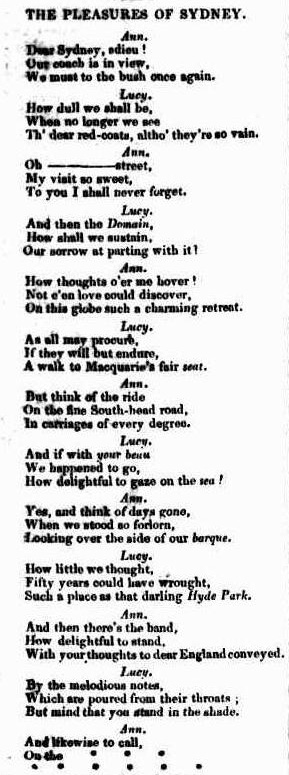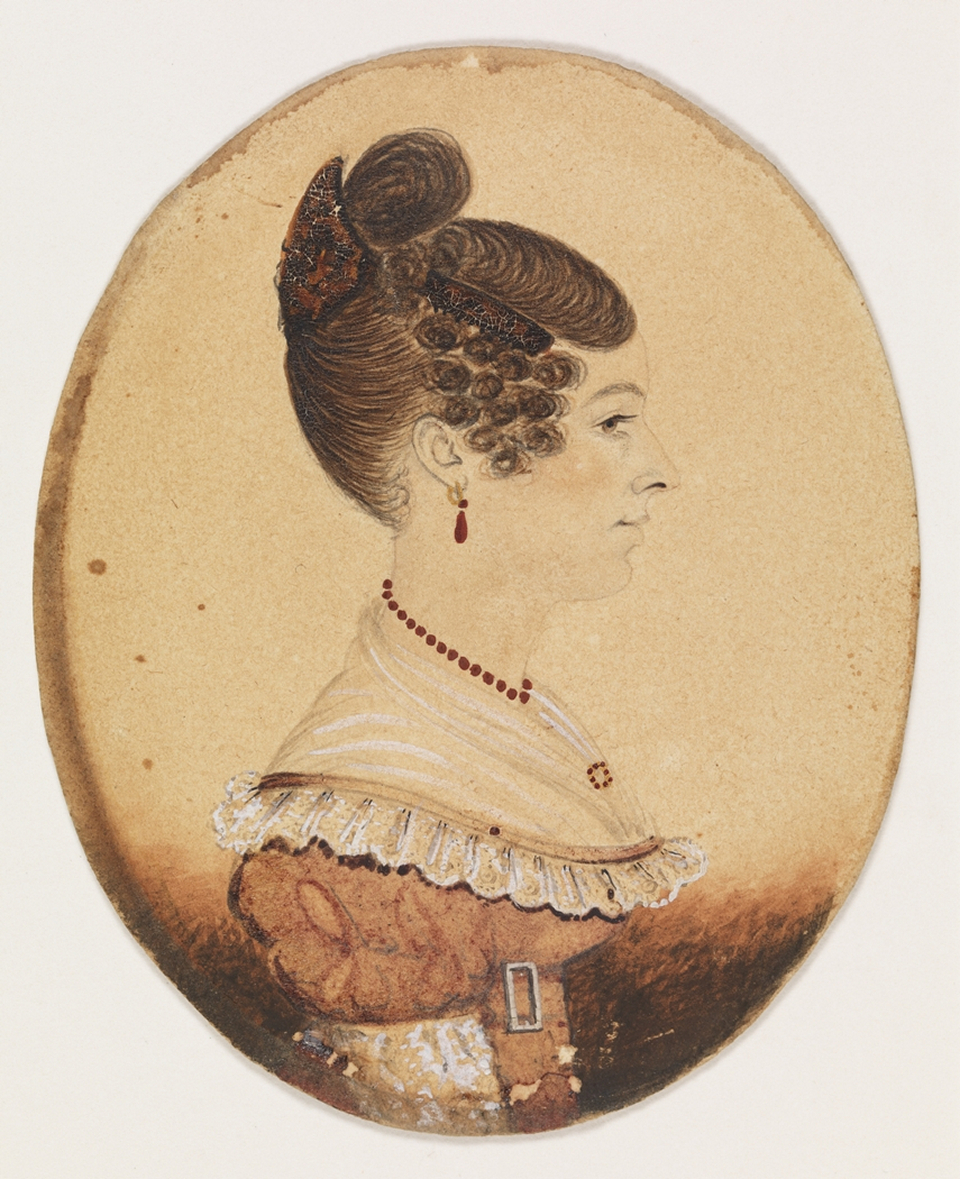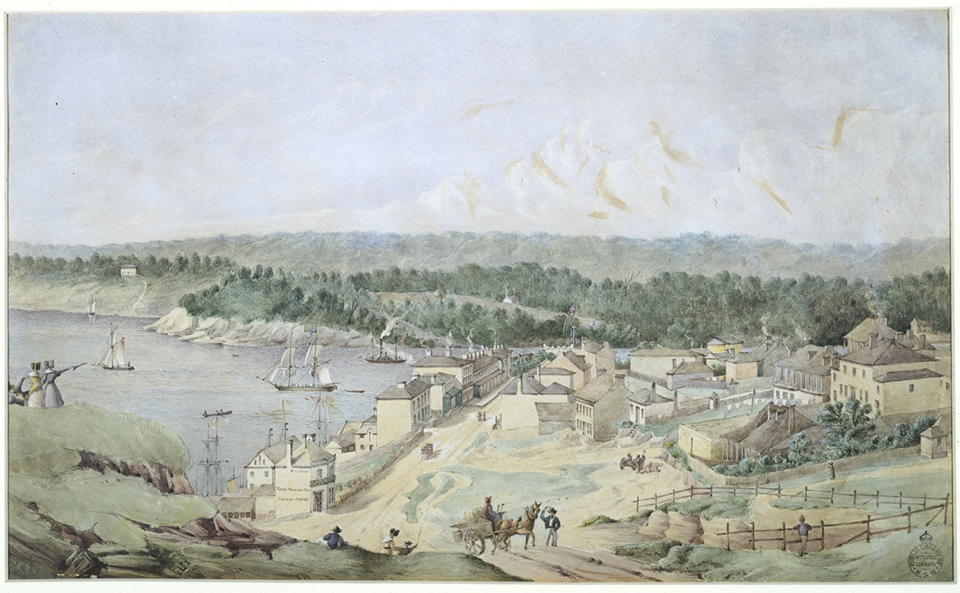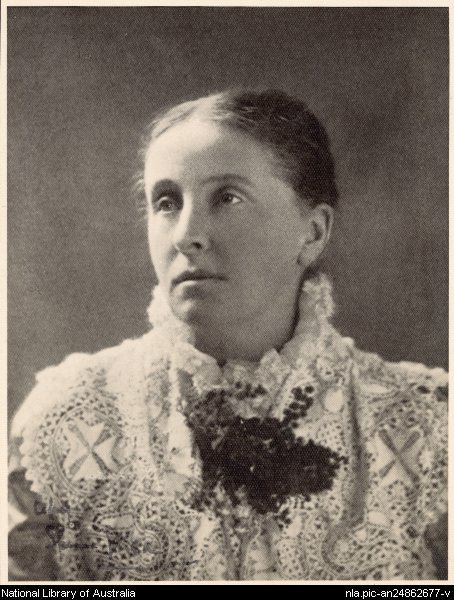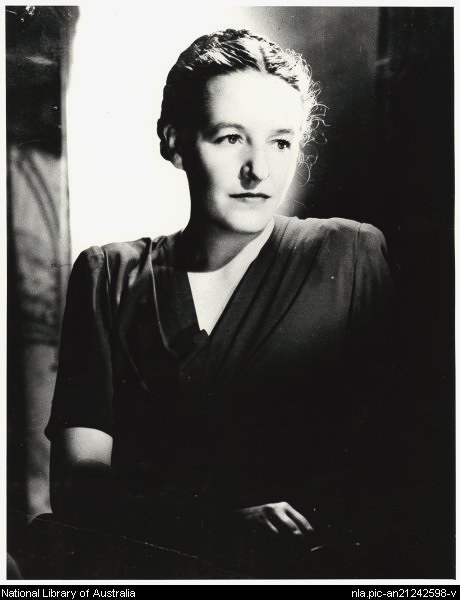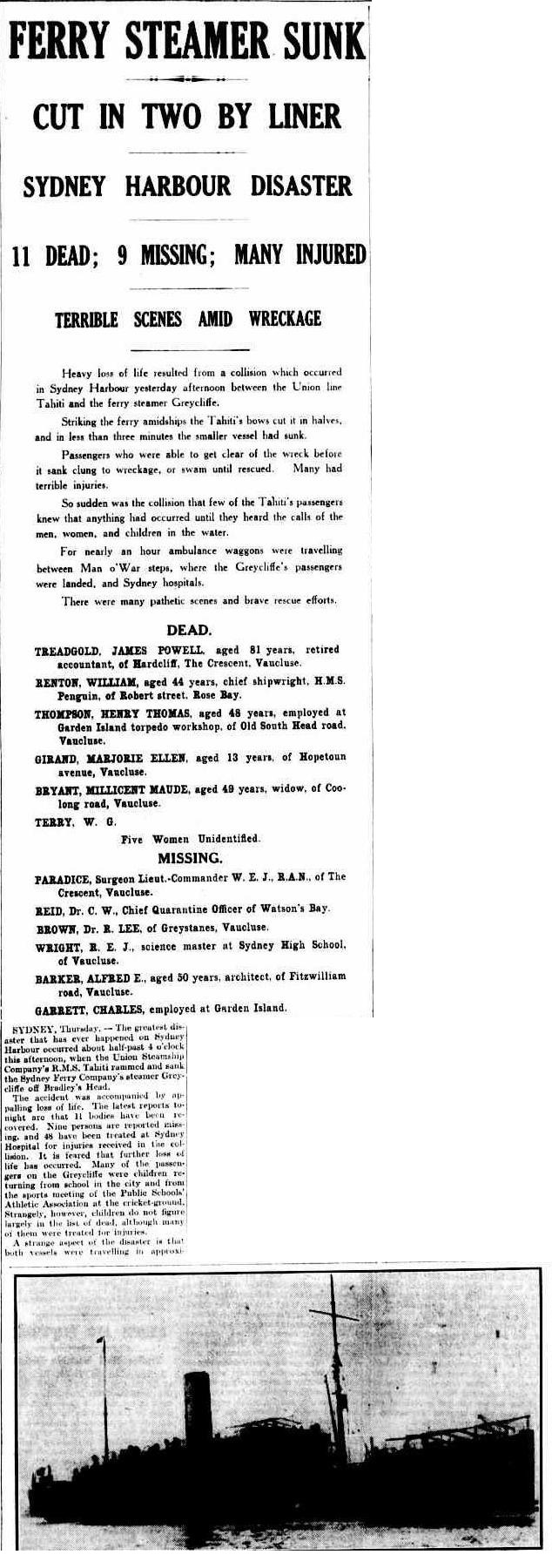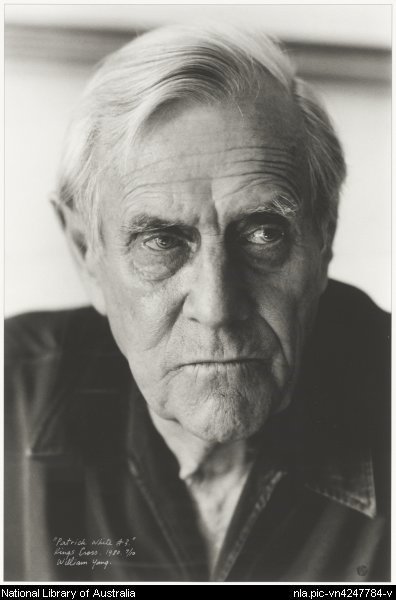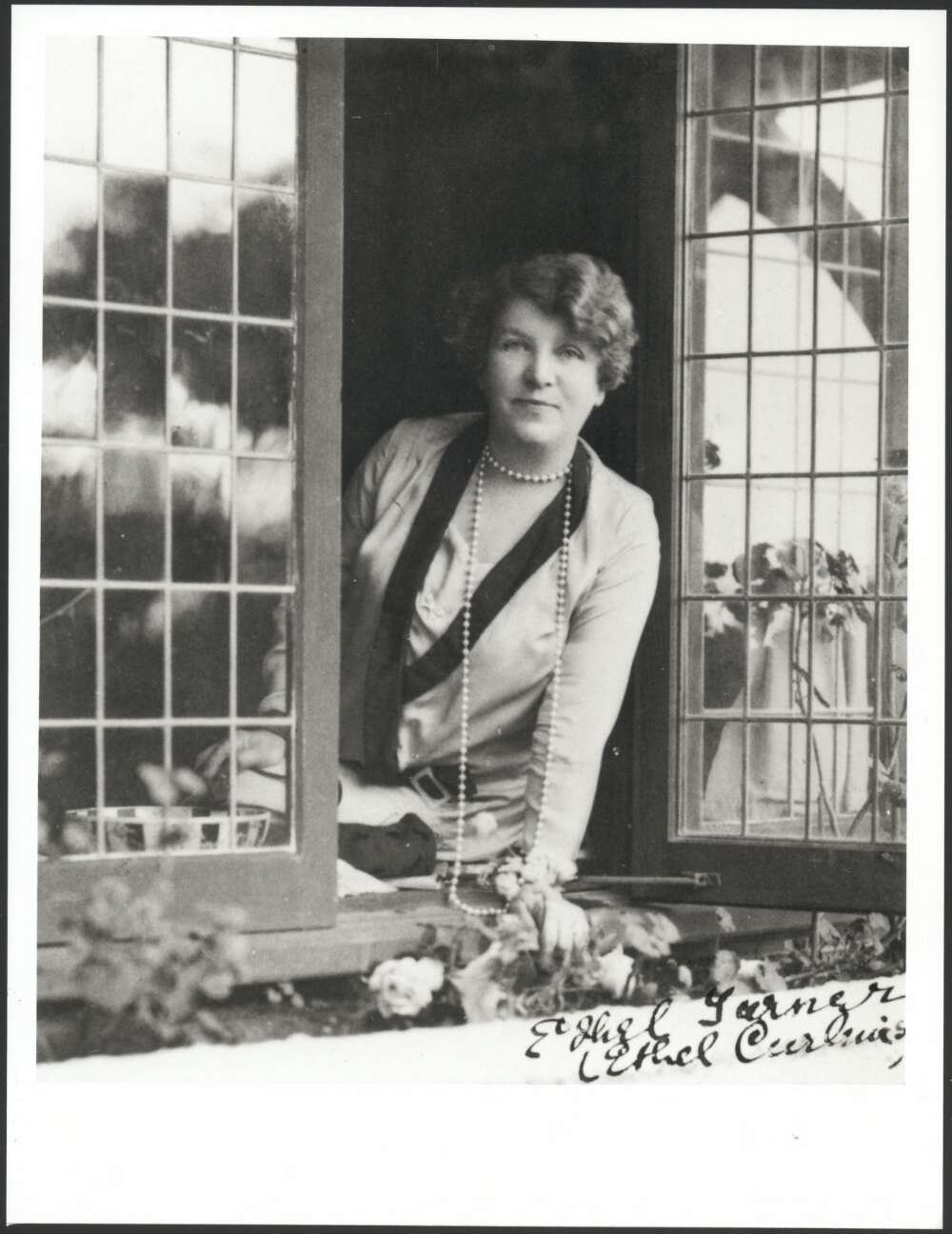The Dictionary of Sydney was archived in 2021.
Literature
Citation
Persistent URL for this entry
To cite this entry in text
To cite this entry in a Wikipedia footnote citation
To cite this entry as a Wikipedia External link
Literature
As the initial site of European settlement, Sydney inevitably figures in much of the first writing to be done on the Australian continent. Government officials, marines and some of the more educated convicts were busy writing letters home after the arrival of the First Fleet in January 1788. Even before 1788, Sydney, or Botany Bay as it was then known, had been written about, first in the journals of James Cook, Joseph Banks and others, and later in newspaper debates about the wisdom of establishing a convict colony in this new southern land to replace the ones lost following the American War of Independence.
Once arrived in Sydney, Governor Phillip had to send regular reports back to London. Many of his officers were also writing their accounts of the new land and its Indigenous inhabitants, with Watkin Tench and David Collins competing to see who would be first to get his to the London publishers. Tench won the race, and his A Narrative of the Expedition to Botany Bay (1789) and A Complete Account of the Settlement at Port Jackson in New South Wales (1793) have remained the best-known of the accounts of life in early Sydney. More recently, the publication of letters by other early visitors and settlers, such as naval surgeon George Worgan, pastoralist Elizabeth Macarthur and convict and successful businesswoman Mary Reibey, has provided insights into how Sydney appeared to them. Reibey, for example, writing to her aunt Penelope Hope the day after reaching Sydney on 7 October 1792, thought it 'looks a pleasant place'. [1]1
Early poetry
Although a printing press and some miscellaneous type had arrived in Sydney in 1788, Australia's first newspaper, the Sydney Gazette, did not begin publication until 5 March 1803. Its first original poem, published a year later, was not set in Sydney. Indeed, like most of the numerous poems published in nineteenth-century Australian newspapers and magazines, it was not even set specifically in Australia. Soon, however, poets were busy writing the political squibs and satires which, at a time when newspapers were not illustrated, took the place of today's political cartoons. Prominent among such satirists were Laurence Halloran, first headmaster of the Sydney Free Grammar School of 1825, and Australia's most notable colonial poet, Charles Harpur.[media] Others who wrote about early Sydney in more glowing poetical terms include the convict 'poet laureate', Michael Massey Robinson, in his various odes in celebration of kings' and queens' birthdays; William Charles Wentworth in his 1823 Cambridge prize poem 'Australasia'; and the anonymous author of 'The Pleasures of Sydney', published in the Sydney Gazette on 27 March 1830.
Poetry from 1850 to 1914
Many other leading nineteenth-century Australian poets were born or spent much of their life in Sydney, including Henry Kendall, Henry Lawson, 'Banjo' Paterson, Victor Daley, Barcroft Boake and Christopher Brennan. While their best-known poems often deal with Australian nature, as in the case of Kendall, or outback life, as in the case of Lawson, Paterson and Boake, several wrote poems specifically set in Sydney. Kendall's 'Sydney Harbour' is one of many poems from this time celebrating the scenic beauty of an already famous place.
Lawson, in contrast, focussed in many of his early poems and stories on the plight of Sydney's poor and dispossessed. In 'Faces in the Street' (1888) the poet watches in despair 'the wan and weary faces' moving past his window in the early morning and in the evening, when the 'sickly yellow gaslights rise to mock the going day'. While Christopher Brennan's poetry is very different in style and content from Lawson's, Sydney's 'yellow gaslights' also feature in one of the poems which make up his livre compose, Poems (1913) (1914). And in its final section, the '1908 Epilogue', the poet travels by tram down George Street towards the University of Sydney, passing shops now lit with 'the electrics' ghastly blue', and St Benedict's in Broadway where he was christened.
Poetry from 1914 to the present
In the twentieth century and beyond, Sydney has continued to be the home or birthplace of many leading poets, including Mary Gilmore, Kenneth Slessor, James McAuley, RD FitzGerald, Douglas Stewart, Francis Webb, Bruce Beaver, Les Murray, Vivian Smith, John Tranter, JS Harry, David Malouf, Robert Adamson, Dorothy Hewett, Robert Gray, Joanne Burns, Michael Dransfield, Pam Brown, Jennifer Maiden, John Forbes, Jill Jones, Dorothy Porter and Judith Beveridge. Undoubtedly the best-known poem to be set in Sydney is Slessor's 'Five Bells' (1939), in which the speaker looks out at the harbour at night, remembering his friend Joe Lynch who drowned after falling or jumping off a ferry. A large mural by John Olsen based on 'Five Bells' can be found in the Opera House. Among Slessor's many other Sydney poems are 'Elegy in a Botanic Gardens', 'Pan at Lane Cove', and his celebration of Kings Cross, 'William Street', which begins
The red globes of light, the liquor-green,
The pulsing arrows and the running fire
Spilt on the stones, go deeper than a stream;
You find this ugly, I find it lovely.
Slessor also wrote much light verse set in Sydney for Smith 's Weekly; some of this has been collected in Darlinghurst Nights (1932) and Backless Betty from Bondi (1983).
Many of Dame Mary Gilmore's poems were written in Sydney, where she lived for the last 50 years of her long life. The one most strongly associated with the city is 'Old Botany Bay', a celebration of the contribution of convicts to the development of the nation, published at a time when this aspect of Australia's past was still considered shameful. One of James McAuley's best-known poems, 'Because', is part of a sequence 'On the Western Line', describing his childhood. It opens
My father and my mother never quarrelled.
They were united in a kind of love
As daily as the Sydney Morning Herald,
Rather than like the eagle or the dove.
McAuley spent his later years in Hobart; Vivian Smith made the trip in reverse, living in Sydney from the 1960s. His 'Early Arrival: Sydney' opens: 'Red cockatoo crests caught in coral trees:/ my Sydney emblems.'
Although his work is most strongly associated with the bush of his birth and childhood, Les Murray, like a number of other poets mentioned here, attended Sydney University and has written some memorable poems about Sydney. His sonnet sequence 'Sidere Mens Eadem Mutato', takes its title from the University's motto, while another sequence offers 'The Sydney Highrise Variations'. One of Murray's best-loved poems, 'An Absolutely Ordinary Rainbow', is set in Martin Place, where 'There's a fellow crying . . . They can't stop him.' John Forbes, a younger writer who took a very different approach to poetry, has an ironic dig at Murray in his 'Afternoon Papers', a celebration of Sydney where 'No one starts crying in Martin Place'.
John Tranter has written many poems about aspects of Sydney life, from the street directories published by Robinson and Gregory, 'The Guides', to 'Backyard', where all that is needed is 'some cold beer, a few old friends in the afternoon, / a Southerly Buster at dusk.' A newer Sydney is seen in his 'Debbie and Co.' which opens
The Council Pool's chockablock
with Greek kids shouting in Italian.
Isn't it Sunday afternoon?
In 'An Elm Tree in Paddington', Robert Adamson thinks of earlier Sydney poets, 'Lawson at The Rose and Crown' and Brennan 'soured by love/ and Symbolism.' Dorothy Hewett's 'In Moncur Street' records a time when this locale was still home to Sammy Smiles, Aime and Alf instead of today's trendies. Michael Dransfield, who was part of the drug culture of the late 1960s and died at 24, wrote what is surely the shortest poem about Sydney:
Flying
i was flying over Sydney
in a giant dog
things looked bad
Dorothy Porter's verse novel What a Piece of Work (1999) is set in the former Callan Park mental hospital at Rozelle, now the home of Sydney College of the Arts. One of the characters is based on Francis Webb who was a patient at Callan Park in the 1960s. Webb's own well-known sequence, 'Ward Two' (1964), is set at the Parramatta Psychiatric Centre.
Early fiction
[media]The first novel to be written and published in Sydney, Anna Maria Bunn's The Guardian (1838), was set in Ireland and contains only passing references to Australia, mainly uncomplimentary. Legends of Australia, published anonymously in parts in Sydney in 1842, was written by John Lang, making him the first Australian-born novelist. His novel The Forger's Wife (1855) and many of the stories in Botany Bay: Or, True Tales of Early Australia (1859) are also set in Sydney and provide vivid pictures of life during the convict period. Written by Sydney-born DH Deniehy when he was 17, 'The Legend of Newtown' appeared in the Sydney Sentinel on 5 November 1845. Newtown is described as 'the favourite ride of our cits … to snatch a mouthful of fresh air, a view of the ruralities of the place'. Although not published until 1929, Ralph Rashleigh was supposedly written by convict James Tucker in [media]the 1840s. Mainly set outside the city, it opens with some telling descriptions of early Sydney, including The Rocks, and of the theatricals performed by prisoners at the Emu Plains penal station.
Fiction from 1850 to 1900
Some parts of Gertrude the Emigrant (1857) and Cowanda, the Veteran's Grant (1859) by Louisa Atkinson, the first Australian-born woman novelist, are set in Sydney. Another novel, Social Life in Sydney (1866) by 'Isabel Massary', otherwise Elizabeth Ramsey-Laye, deals with the problems faced by members of urban, middle-class families who are trying to overcome the stigma of the convict in [media]the closet. Although she set most of her fiction in Victoria, where she lived, one of Ada Cambridge's most celebrated novels, A Marked Man (1890) is set in Sydney. Cambridge visited Sydney in 1888 and especially enjoyed a trip to Arthur Streeton's artists' camp, overlooking Sirius Cove at Mosman. In the novel it becomes the place where her 'marked man', Richard Delavel, can escape the restrictions of his unfortunate early marriage.
William Lane's The Working Man's Paradise (1892) takes a more jaundiced view of the city in line with its author's socialist criticism of exploitation of the working classes. One character, the poet Arty, is said to be based on Henry Lawson. As already noted, many of Lawson's early works such as his story 'Arvie Aspinall's Alarm Clock' (1892) are equally critical of the harsh treatment experienced by the city's poor in their struggle to make a living. His '"Dossing Out" and "Camping"' (1893) records the misery of unemployed men forced to spend the night sleeping in the Domain or on the city streets.
Inner-city settings and working-class characters
Like much of the fiction set in Sydney published in the first half of the twentieth century, Louis Stone's Jonah (1911) takes place mainly in the inner city, in this case Redfern. It traces the rise of a poor, hunchbacked bootmaker to riches but not happiness. One of its most celebrated scenes provides a graphic account of Paddy's Market on a Saturday night, earlier described by both William Lane and Henry Lawson.
Novelist Christina Stead was born and grew up in Sydney before leaving for London. Her two Sydney novels are Seven Poor Men of Sydney (1934), which focuses on a group of young people and their emotional and intellectual as well as material struggles, and the autobiographical For Love Alone (1943), which traces the heroine's years of working and saving in order to follow a supposed lover to London.
Members of Sydney's working class continued to provide material for later novelists, including Ruth Park, whose popular early novels, The Harp in the South (1948) and Poor Man 's Orange (1949) were set in Surry Hills, as was Kylie Tennant's Foveaux (1939). In Ride on Stranger (1943), Tennant ranged more widely in recounting the adventures of her heroine Shannon Hicks, working in Sydney cafes, at the Royal Easter Show, in radio and for the union movement.
In 1959 while living in Sydney as a member of the Communist Party, Dorothy Hewett published Bobbin Up, about the lives of 14 women employed in a Sydney spinning mill. David Ireland depicts workers at the Botany Bay oil refinery in The Unknown Industrial Prisoner (1971), while his The Glass Canoe (1976) is set in a Parramatta pub. In Oh Lucky Country (1981) Rosa Cappiello describes the struggles of migrant women to survive in Sydney during the 1970s.
Novels of middle-class Sydney life
Kylie Tennant's last novel, Tantavallon (1983), is a satire set in Hunters Hill where she lived for many years. [media]Novels by Tennant's contemporaries Eleanor Dark and Dymphna Cusack also focus more on the middle classes to which they belonged. Cusack's Jungfrau (1936) examines the lives of three women friends: Eve, the conventional Catholic doctor, the radical social worker Marc and the literary Thea who is seduced by her Professor of English, becomes pregnant, and drowns herself in the harbour.
[media]Death by water is featured in much other fiction. One of the stories in Stead's The Salzburg Tales (1934) recounts the worst ferry disaster in Sydney's history, the sinking of the Watsons Bay ferry Greycliffe in 1927 with the loss of 37 lives – Stead was living at Watsons Bay at the time. The same tragedy forms the centrepiece of Eleanor Dark's novel Waterway (1938), while Sumner Locke Elliott's autobiographical Careful, He Might Hear You (1963) ends with a similar event. In Shirley Hazzard's The Transit of Venus (1980), the two sisters at the heart of the story are orphaned by yet another ferry tragedy.
Elizabeth Harrower's first novel, Down in the City (1957) traces a disastrous marriage between a woman from the north shore and a working-class man. Male tyranny and mistreatment of women is also the subject of The Watch Tower (1966), set at Neutral Bay.
Many of Jessica Anderson's novels and stories also have Sydney suburban settings, including An Ordinary Lunacy (1963), The Impersonators (1980) and One of the Wattle Birds (1994). Amy Witting's I for Isobel (1989) and its sequel Isobel on the Way to the Corner Shop (1999) are based on her own early years in Sydney. In Puberty Blues (1979), Kathy Lette and Gabrielle Carey provided often shocking insights into the surfing culture of Cronulla from the perspective of middle-class teenage girls. While Marion Halligan's novels are usually set in Canberra, Wishbone (1994) takes a satirical look at the denizens of Sydney's northern suburbs. Not Meeting Mr Right (2007) by Anita Heiss is the first Australian 'chick lit' to feature an Indigenous Australian heroine.
Historical fiction
Eleanor Dark is best-known for her historical trilogy set in early Sydney: The Timeless Land (1941), No Barrier (1948) and Storm of Time (1953). Later writers who have depicted life in Sydney during the convict era include Tom Keneally in Bring Larks and Heroes (1967) and The Playmaker (1987), based on the city's first theatrical performance, Debra Adelaide in Serpent Dust (1997) and Kate Grenville in The Secret River (2005) and The Lieutenant (2008). Grenville first achieved success with another historical novel, Lilian's Story (1985), based on the early twentieth-century Sydney identity Bea Miles; her Dark Places (1994) is told from the point of view of Lilian's father, Albion. While Ethel Anderson's At Parramatta (1956) is set during the nineteenth century her whimsical and witty approach is very different to the graphic realism favoured by most others writing about this period.
Two other women novelists, Marjorie Barnard and Flora Eldershaw, who wrote under the pseudonym M Barnard Eldershaw, began with a historical novel, A House in Built (1929), set mainly in Hunters Hill and tracing the growth and fading away of a family fortune, with a particular focus on the frustration of women members who are not able to play any part in the business. Their major work Tomorrow and Tomorrow and Tomorrow (1947) is set partly in the decade leading up to World War II, and partly many years in the future when present-day Sydney is an architectural ruin. It includes graphic scenes of a supposed invasion and burning of Sydney icons like the Public Library and the University. A number of other novels have been written about Sydney during World War II, with a special focus on the influx of American servicemen. These include Dymphna Cusack and Florence James's Come in Spinner (1951), Xavier Herbert's Soldier's Women (1961) and Tom Keneally's An Angel in Australia (2002).
Patrick White
If Slessor is the pre-eminent poet of Sydney, then Patrick White is its great novelist. White was actually born in England during his parents' extended honeymoon, but spent his childhood in Sydney and returned permanently in 1948, living first on a small farm near Castle Hill on the north-west outskirts and later in a house near Centennial Park. Many of his novels, plays and stories are set in Sydney, including a number at 'Sarsaparilla', his name for Castle Hill: The Tree of Man (1955), Riders in the Chariot (1961), The Solid Mandala (1966), The Season at Sarsaparilla (1963) and his long story 'Down at the Dump' (1964). While Voss (1957) is a historical novel, based loosely on the story of Ludwig Leichhardt, it still allowed White to make fun of many of the pretensions of Sydney society, something he expanded on in The Vivisector (1970), which traces the life of a Sydney artist, and in his play Big Toys (1978).
Many of White's later works were set in and around Centennial Park, including The Eye of the Storm (1973), his story 'The Night, the Prowler', filmed in 1978, and his final novel Memoirs of Many in One (1986). [media]David Marr's biography Patrick White: A Life (1991) and his edition of White's Letters (1994) give further insight into White's life in Sydney, his fight to preserve Centennial Park and his often uncomplimentary comments on the city and its inhabitants.
The new wave of the 1970s and after
In fiction, as in poetry and drama, the late 1960s saw younger, mostly male writers, challenging many of the prevailing assumptions and traditions of Australian literature. In the short story, where many first made their mark, there was a rejection of the bush realism of the Lawson tradition, in favour of inner city settings and more experimental styles.
Frank Moorhouse produced his discontinuous narratives, Futility and other Animals (1969) and The Americans, Baby (1972); Michael Wilding wrote stories, Aspects of the Dying Process (1972), and a novel, Living Together (1974), set in and around Balmain, Glebe and Paddington. Moorhouse and Wilding often appeared, thinly disguised, as characters in each other's stories and in Wilding's novel The Short Story Embassy (1975), they are joined by a young woman based on poet Vicki Viidikas, whose prose collection Wrappings (1974) includes stories set in Sydney.
Although Peter Carey's early stories rarely have easily identifiable settings, Sydney has figured in several of his later novels, including Illywacker (1985), Oscar and Lucinda (1988) and The Tax Inspector (1991). Carey has also written a travel book entitled 30 Days in Sydney (2001). In Janette Turner Hospital's The Last Magician (1992), much of the action takes place in an underworld below the city. Amanda Lohrey's Camille's Bread (1995) is an unusual love story, centred on a single mother and her daughter, living under the flight path in Annandale. In The Cross (1995), Mandy Sayer recreates the last days of Juanita Nielsen, who battled to preserve Victoria Street from development. With her husband Louis Nowra, Sayer has also edited an anthology of writing about Kings Cross, In the Gutter … Looking at the Stars (2000). Luke Davies's Candy (1997) graphically describes the impact of heroin addiction on a young couple. In Diary of a Bad Year (2007), Nobel Prize winner JM Coetzee chooses Sydney as the setting for his elliptical story of an ageing writer and his obsessions.
Crime fiction
While Sydney was the setting of Australia's first piece of detective fiction, John Lang's Legends of Australia (1842), it was another century before it began regularly to feature in tales of mystery and murder. [media]The sisters who wrote as 'Margot Neville' set most of their 18 crime novels, beginning with Murder in Rockwater (1945), in Sydney, as did Pat Flower, who published in this genre from the 1950s to the 1970s. Particularly significant is the work of Peter Corris, whose Sydney detective Cliff Hardy first began tramping the mean streets of Glebe, Bondi, Palm Beach and all places in between in The Dying Trade (1980) and continues to do so. Marele Day's Claudia Valentine, introduced in The Life and Crimes of Harry Lavender (1988), appears to have ceased detecting after four cases. But Jon Cleary's Scobie Malone, first introduced in The High Commissioner (1966), is also still going strong.
Others who have written detective or crime series set in Sydney include Claire McNab, Jean Bedford, Jennifer Rowe, Gabrielle Lord, Susan Geason and Robert G Barrett. While Kerry Greenwood's Phryne Fisher usually detects in Melbourne, she pays a visit to Sydney in Death Before Wicket (1999). More experimental, one-off works in this genre include Jennifer Maiden's Play with Knives (1990), Finola Moorhead's Still Murder (1991) and Dorothy Porter's verse novel, The Monkey's Mask (1995).
Memoirs and other non-fiction
Works about Sydney childhoods and education include Donald Horne's The Education of Young Donald (1967), Clive James's Unreliable Memoirs (1980), Bernard Smith's The Boy Adeodatus (1984), Tom Keneally's Homebush Boy (1995), Geraldine Brooks's Foreign Correspondence (1998) and Shane Weaver's Blacktown (2003).
Of the many books written about Sydney, two that stand out are Ruth Park's Companion Guide to Sydney (1973) and John Birmingham's Leviathan: The Unauthorised Biography of Sydney (1999). Richard Hall has edited a collection of writing about Sydney, Sydney: An Oxford Anthology (2000). In The Sea Coast of Bohemia (1992), Peter Kirkpatrick describes the people and places that were an essential part of literary life in Sydney during the 1920s.
Children's books
[media]While the climax of one of our best loved children's books, Ethel Turner's Seven Little Australians (1894), takes place in the bush, most of it is set in the North Shore suburb of Gordon, as is its sequel The Family at Misrule (1895). Historical novels set in Sydney include Ruth C Williams's Verity of Sydney Town (1950), Doris Chadwick's John of the Sirius (1955) and Ruth Park's much-loved Playing Beattie Bow (1980), in which a girl from the 1970s time-travels back to the Rocks of the 1870s. In Patricia Wrightson's An Older Kind of Magic (1972), ancient spirits intervene to save the Botanic Gardens from being developed as a car park.
Melina Marchetta's highly popular young adult novel Looking for Alibrandi (1992) examines the problems faced by a young Sydney girl from an Italian background. Other leading writers to have set recent works in Sydney include Ursula Dubosarsky, Margo Lanagan, David Metzenthen, Gillian Rubinstein, Libby Hathorn and Libby Gleeson. Scholastic Press has issued a series of novels which aim to give children's perspectives on significant historical periods. They include Plagues and Federation: The Diary of Kitty Barnes, the Rocks, Sydney, 1901 (2000) by Vashti Farrer, Who Am I? The Diary of Mary Talence: Sydney, 1937 (2001) by Anita Heiss, and The Melting Pot: The Diary of Edward Chek Chee, Sydney, 1903-04 (2007) by Chris Cheng.
Writers' houses and other memorials
Although many hoped that Patrick White's Centennial Park house would become a writers' retreat or house museum, this did not happen. Nutcote, in Neutral Bay, where children's author and illustrator May Gibbs lived from the 1920s until her death, was, however, preserved, thanks to dedicated campaigning and fundraising. Lyndham Hall, Lyndham Street, Bexley, home to Christina Stead from 1907 to 1917, was purchased in 1970 by Rockdale Council and is preserved. Eleanor Dark's home, Varuna, in the Blue Mountains, has become a Writer's Centre thanks to the generosity of her son and support from the New South Wales Ministry for the Arts.
A statue of Henry Lawson can be found in the Domain. The Writers' Walk around Circular Quay consists of a series of bronze pavement plaques, featuring quotations from Australian writers who have lived in Sydney and international writers who have visited and written about it.
References
AustLit electronic database: www.austlit.edu.au, viewed 23 April 2009
Robert Gray and Vivian Smith (eds), Sydney's Poems, Primavera Press, Leichhardt, NSW, 1992
Stephen Knight, Continent of Mystery: A Thematic History of Australian Crime Fiction, Melbourne University Press, Melbourne, 1997
Peter Pierce (ed), The Oxford Literary Guide to Australia, Oxford University Press, Melbourne, 1987
Elizabeth Webby (ed), The Cambridge Companion to Australian Literature, Cambridge University Press, Cambridge, 2000
William Wilde, Joy Hooton and Barry Andrews, The Oxford Companion to Australian Literature, 2nd edition, Oxford University Press, Melbourne, 1994
Notes
[1] 1 Letter of 8 October 1792, from Brenda Niall and John Thompson, eds, The Oxford Book of Australian Letters, Oxford University Press, Melbourne, 1998, p 13
.


